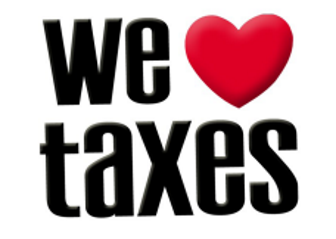The FAFSA application season began October 1 and deadline for the 2019-2020 FAFSA is midnight, Central Time, June 30, 2020. SavingforCollege.com prepared some tips for filing. READ THE ARTICLE
Category Archives: Uncategorized
VNFA NEWS
Meet the Team

Joanne Kurtz, Executive Administrative Assistant
Years at VNFA: 14 years (in March 2020)
“I enjoy
working with my colleagues because they make me feel supported, and they
continuously motivate me to do my best.”

About Joanne: I am married to my wonderful husband and have two adult children. We like to take the time to enjoy the outdoors by visiting the Poconos and the beach. We also have an 11-year-old yellow Labrador retriever, and she is a joy to our whole family. I enjoy reading, exercising, cooking and eating healthy.
What I enjoy most about my job is helping clients and helping our team. There are a variety of tasks that are involved which makes each day unique and enjoyable. Our team benefits from making sure procedures are carried through for great organization and communication which helps our clients meet their financial goals.
“Your Financial Choices”
The show airs on WDIY Wednesday evenings, from 6-7 p.m. The show is hosted by Valley National’s Laurie Siebert CPA, CFP®, AEP®.
This week, Laurie welcomes back Tim Roof, CFP and Connor Darrell, CFA to discuss: “Third Quarter Commentary and Investment Education.”
Laurie and her guests will take your questions live on the air at 610-758-8810 or in advance via yourfinancialchoices.com/contactlaurie.
Recordings of past shows are available to listen or download at both yourfinancialchoices.com and wdiy.org.
TAX REMINDER
Q3 Estimated tax
payments are due September 16, 2019!
These estimates may
include federal, state and/or local vouchers depending on your situation.
What We’re Reading
Tax planning is a year-round consideration for our clients and our team is diligent about staying informed.
Property Acquire by Gift of Through an Estate
Record Keeping for Individuals – Personal Residence Tips
Tax Breaks for Charitable Giving
Visit our website at valleynationalgroup.com/tax for recent articles.
What We’re Reading
A collection of links to articles and ideas our VNFA staff found interesting and informative recently.
Five Retirement-Planning Myths (schwab.com)
The average employer 401(k) match is at an all-time high – see how yours compares (cnbc.com)
SALT deduction cap rules finalized; safe harbor proposed (Journal of Accountancy)
12 Strategies for Keeping Lifestyle Inflation in Check (thesimpledollar.com)
FROM THE PROS… VIDEO
Message from Our CEO
Matthew Petrozelli, CEO, discusses the value proposition behind our tax services, and previews a socially conscious investment strategy available to our wealth management clients. WATCH NOW
The Numbers & “Heat Map”
THE NUMBERS
Sources: Index Returns: Morningstar Workstation. Past performance is no guarantee of future results. Indices are unmanaged and cannot be invested into directly. Three, five and ten year returns are annualized excluding dividends. Interest Rates: Federal Reserve, Freddie Mac
US ECONOMIC HEAT MAP
The health of the US economy is a key driver of long-term returns in the stock market. Below, we grade 5 key economic conditions that we believe are of particular importance to investors.
|
CONSUMER SPENDING |
A |
We have downgraded our consumer spending grade to A from A+ following weaker than expected December retail sales data and some declines in consumer confidence surveys. However, monthly data can be volatile and we still believe that the US consumer is in a healthy position. |
|
FED POLICIES |
C- |
The Federal Reserve implemented four interest rate hikes during 2018, and while the rate hike cycle appears to be on pause for now, rising interest rates tend to reduce economic growth potential and can lead to repricing of income producing assets. |
|
BUSINESS PROFITABILITY |
B+ |
Corporate earnings remain strong, but we anticipate earnings growth will taper off in 2019. We are also beginning to see a higher number of companies reducing forward earnings guidance, a sign that earnings growth may have reached its peak in 2018. |
|
EMPLOYMENT |
A |
The US economy added just 20,000 new jobs in February, which was far less than expected. This was the weakest number since 2017, but job gains from both December and January were revised upwards. Despite the weak report, the labor market remains one of the strongest components of the economic backdrop at this time. |
|
INFLATION |
B |
Inflation is often a sign of “tightening” in the economy, and can be a signal that growth is peaking. The inflation rate remains benign at this time, but we see the potential for an increase moving forward. This metric deserves our attention. |
|
OTHER CONCERNS |
||
|
INTERNATIONAL RISKS |
5 |
The above ratings assume no international crisis. On a scale of 1 to 10 with 10 being the highest level of crisis, we rate these international risks collectively as a 5. These risks deserve our ongoing attention. |
The “Heat Map” is a subjective analysis based upon metrics that VNFA’s investment committee believes are important to financial markets and the economy. The “Heat Map” is designed for informational purposes only and is not intended for use as a basis for investment decisions.
TAX REMINDER!

We are just about a month away from the IRS Tax Return Deadline. Please make sure you take a few minutes to complete our 2018 Tax Questionnaire.
Remember to use the resources at valleynationalgroup.com/tax to help you ensure that you have everything we will need to prepare your tax returns.
The Markets This Week
by Connor Darrell
CFA, Assistant Vice President – Head of Investments
The
major global equity indexes posted their worst week of the year as investor
sentiment was impacted by further evidence of a slowdown in global economic
activity. In the U.S., the monthly jobs number came in far lower than expected,
though there is reason to believe that the report was heavily influenced by
weather-related factors. In Europe, the European Central Bank (ECB) announced
that it intended to inject further liquidity into the European banking system
in an effort to curtail the negative impact that trade tensions and
geopolitical concerns have had on economic growth. Lastly, the Chinese
government seemed to unsettle markets when it announced a new fiscal stimulus
program aimed at increasing activity in its slowing manufacturing sector. Bonds
climbed higher as rates fell amid the flurry of new economic data and policy
developments.
The Pendulum Continues to Swing
At the beginning of December, the S&P 500 was trading right around the 2,790 level before negative sentiment drove the index to the brink of bear market territory. After a sharp reversal around Christmas and one of the strongest starts to a year in decades, the turmoil from December felt like a faded memory. But last week brought with it five consecutive days of negative returns for equity markets, leaving many investors wondering where we go from here
It’s important to remember that market performance tends to track earnings over the long-term, and earnings are largely driven by economic fundamentals. The fact is that economic fundamentals simply do not reverse course so significantly in such a short period of time. As such, it makes sense to inquire as to whether the market was too pessimistic during December or too optimistic during January and February? The answer is probably yes on both fronts.
Given the heightened uncertainty and slower growth rates being observed around the globe (as compared to 2017 levels), the current fair value for the market is likely somewhere in between December’s bottom and March’s peak. The market seems to have attributed much of the recent slowdown in China to continuing trade tensions with the United States, while in Europe, the uncertainty of the Brexit situation continues to impact business investment and economic activity. Clarity on both of these issues is likely to be provided before the end of 2019, and this may allow economic growth to reaccelerate by the second half of the year. But until then, the pendulum may keep swinging back and forth with markets stuck in a bounded trading range. For investors, this is a period where patience and discipline will be essential. We continue to favor a disciplined approach to tactical rebalancing rather than attempting to time entry and exit points.
